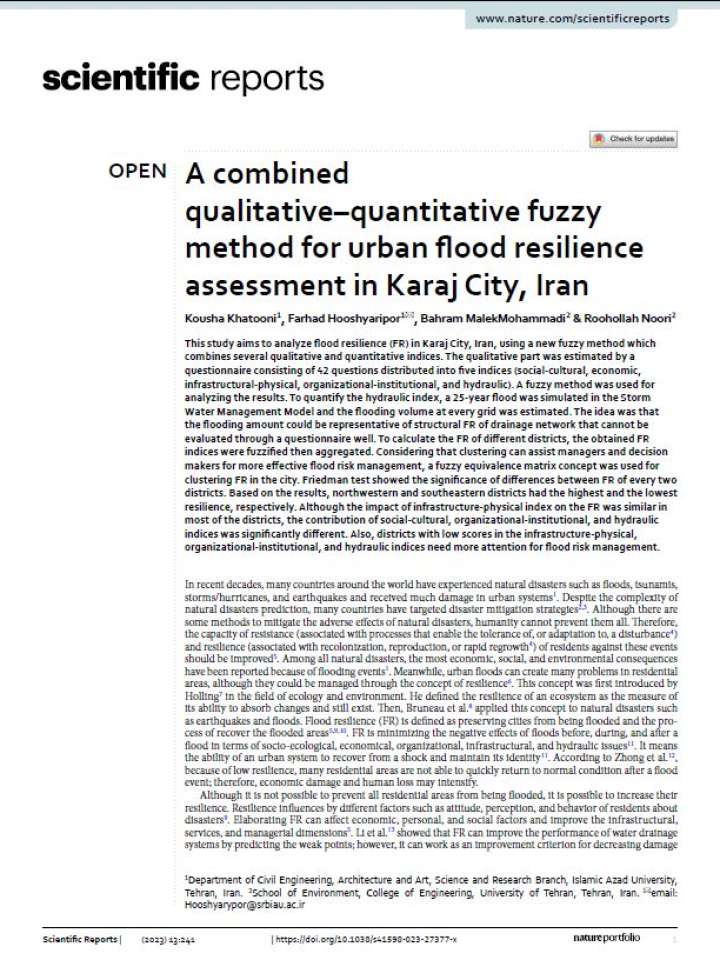A combined qualitative–quantitative fuzzy method for urban flood resilience assessment in Karaj City, Iran
This study aims to analyze flood resilience (FR) in Karaj City, Iran, using a new fuzzy method which combines several qualitative and quantitative indices. The qualitative part was estimated by a questionnaire consisting of 42 questions distributed into five indices (social-cultural, economic, infrastructural-physical, organizational-institutional, and hydraulic). A fuzzy method was used for analyzing the results. To quantify the hydraulic index, a 25-year flood was simulated in the Storm Water Management Model and the flooding volume at every grid was estimated.
The idea was that the flooding amount could be representative of structural FR of drainage network that cannot be evaluated through a questionnaire well. To calculate the FR of different districts, the obtained FR indices were fuzzified then aggregated. Considering that clustering can assist managers and decision makers for more effective flood risk management, a fuzzy equivalence matrix concept was used for clustering FR in the city. ased on the results, northwestern and southeastern districts had the highest and the lowest resilience, respectively. Although the impact of infrastructure-physical index on the FR was similar in most of the districts, the contribution of social-cultural, organizational-institutional, and hydraulic indices was significantly different. Also, districts with low scores in the infrastructure-physical, organizational-institutional, and hydraulic indices need more attention for flood risk management.
Explore further
